
Steven Spielberg’s Lincoln gets a poster. Hard to believe this project is finally almost in the can.
Haunting the Web Since 1999


Ten days into the new year, it’s past time to knock out GitM’s best-of-2011 list. To be honest, last year’s movie crop was somewhat underwhelming, and as always, there are a few more gaps I’d love to have plugged first — Cedar Rapids, Margin Call, Martha Marcy May Marlene, Take Shelter, Warrior — but, for what I saw last year, here’s the best of ’em…




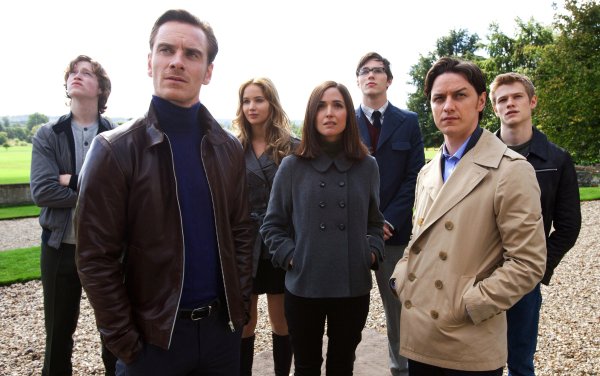






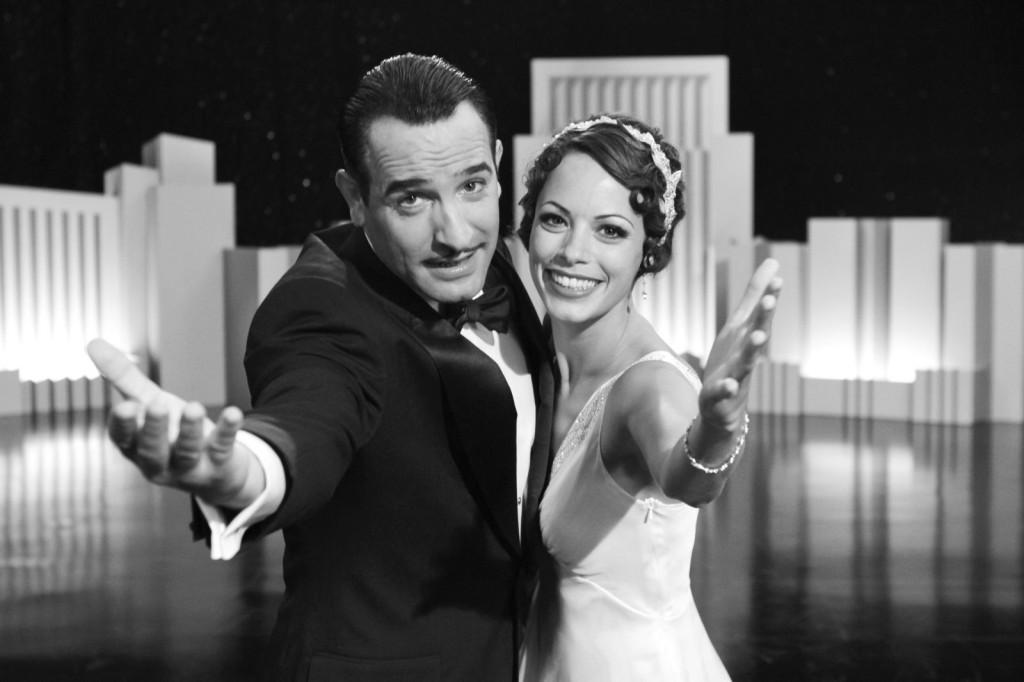



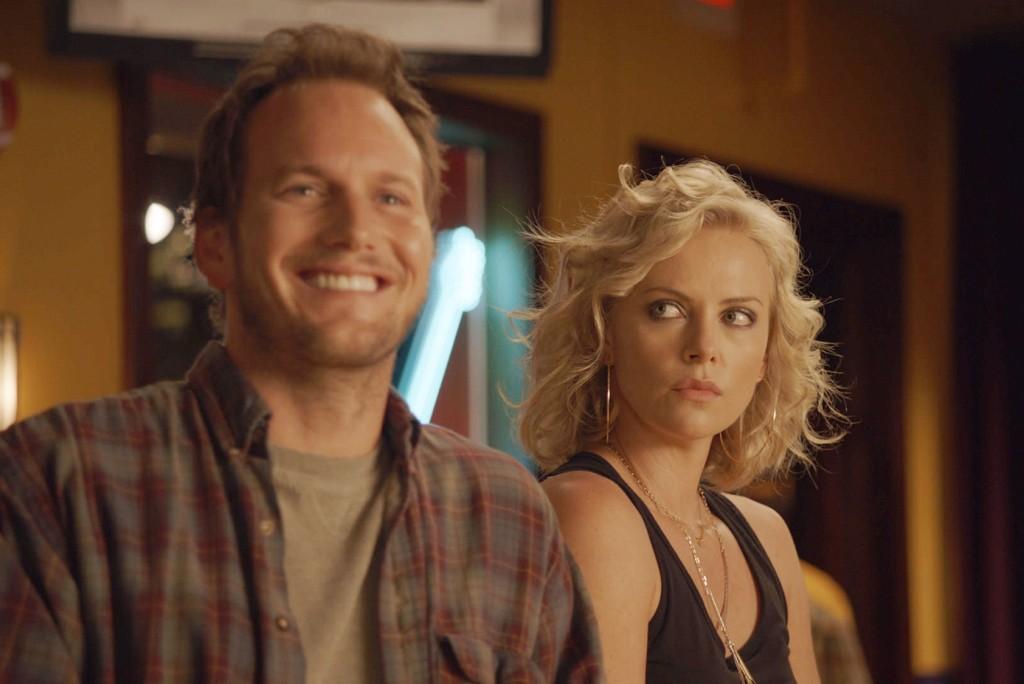


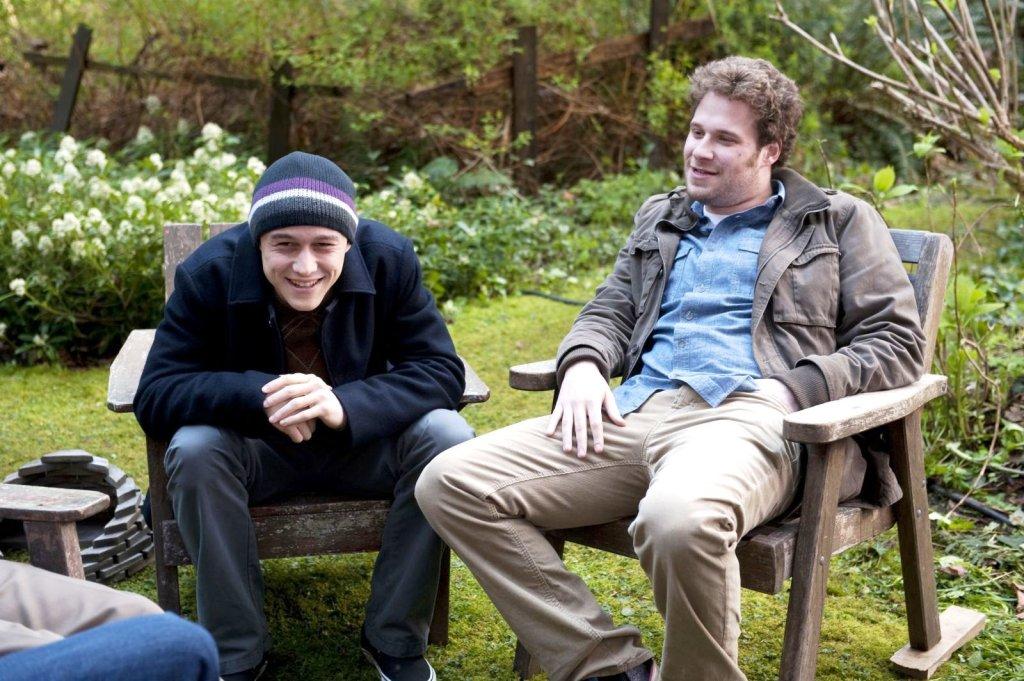

Most Disappointing: Had I more faith in Zack Snyder beforehand, this would go to his thoroughly terrible Sucker Punch, and, alas, the unfortunately botched Green Lantern came close to taking this spot as well. In the end, though, this goes to Jon Favreau’s misfire Cowboys and Aliens. Cowboys! Aliens! Daniel Craig! Harrison Ford! And yet, this one came out duller than dirt.
Worth Netflixing: The Adjustment Bureau, Beginners, The Conspirator, A Dangerous Method, Harry Potter and the Deathly Hallows, Pt. 2, Hugo, The Ides of March, J. Edgar, Rise of the Planet of the Apes, The Tree of Life, The Trip, Win Win
Don’t Bother: Battle: Los Angeles, Blue Valentine (2010), Friends with Benefits, Limitless, Meek’s Cutoff, Shame, Sherlock Holmes: Game of Shadows, Somewhere (2010), Super 8, Water for Elephants
Best Actor: Gary Oldman, Tinker Tailor Soldier Spy; George Clooney, The Descendants; Michael Fassbender, Shame
Best Actress: Rooney Mara, The Girl with the Dragon Tattoo, Charlize Theron, Young Adult; Mia Wasikowska, Jane Eyre
Best Supporting Actor: Uggie, The Artist; Christopher Plummer, Beginners, Eric Bana, Hanna; Benedict Cumberbatch and Tom Hardy, Tinker Tailor Soldier Spy
Best Supporting Actress: Shailene Woodley, The Descendants; Jessica Chastain, The Tree of Life, Melissa McCarthy, Bridesmaids, Cate Blanchett, Hanna
Unseen: 30 Minutes or Less, Albert Nobbs, Anonymous, Another Earth, Apollo 18, Arthur, Arthur Christmas, Atlas Shrugged, A Very Harold and Kumar Christmas, Bad Teacher, Barney’s Version, Beastly, The Beaver, Bellflower, Biutiful, Carnage, Cars 2, Cedar Rapids, The Change-Up, Colombiana, Conan the Barbarian, Coriolanus, The Darkest Hour, The Debt, The Devil’s Double, The Dilemma, Dolphin Tale, Don’t Be Afraid of the Dark, Dream House, Drive Angry, Dylan Dog: Dead of Night, Everything Must Go, Extremely Loud & Incredibly Close, Fast Five, Footloose, Fright Night, The Guard, The Hangover Pt 2, Happy Feet 2,The Help, Hesher, Horrible Bosses, I Am Number Four, Immortals, Incendies, In the Land of Blood and Honey, In Time, The Iron Lady, I Saw the Devil, Jack and Jill, Killer Elite, Kung Fu Panda 2, Larry Crowne, The Last Circus, Like Crazy, The Lincoln Lawyer, Margaret, Margin Call, Martha Marcy May Marlene, The Mechanic, Melancholia, Moneyball, Mr. Popper’s Penguins, My Week with Marilyn, New Year’s Eve, Our Idiot Brother, Paranormal Activity 3, Pariah, Paul, Pirates of the Caribbean: On Stranger Tides, Priest, Puss in Boots, Rango, Real Steel, Red State, Rio, The Rum Diary, Sanctum, Scream 4, Sleeping Beauty, The Smurfs, Something Borrowed, Straw Dogs, Take Me Home Tonight, Take Shelter, The Thing, The Three Musketeers, Tower Heist, Transformers: Dark of the Moon, Twilight: Breaking Dawn, The Way Back, Warrior, We Bought a Zoo, We Need to Talk about Kevin, Winnie the Pooh, Your Highness, Zookeeper
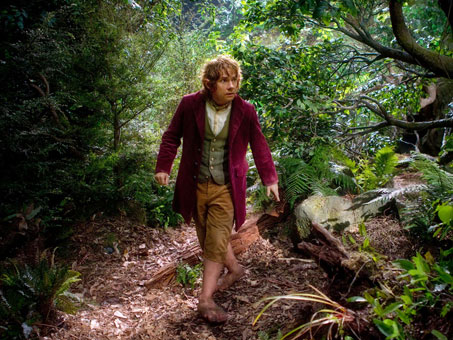

Don’t get me wrong — The Artist is a very enjoyable evening at the movies, and it’s an airier, sweeter, and less didactic love letter to an earlier era of cinema than was Scorsese’s occasionally-ponderous Hugo. But there’s not much there there. Aside from the occasional po-mo in-joke, this is a 1920’s film through and through, one that borrows the storytelling conventions and acting styles of the silent film era (and much of its story from a later production, Singing in the Rain.) In other words, it’s pretty much just a gimmick. An entertaining one, sure, but a gimmick nonetheless.
As far as the story goes, the year is 1927, and silent film actor George Valentin (an appealing, Gable-esque Jean Dujardin) is king of the hill, top of the heap. His Tintin-like adventure serials — Tintin-like in that his sidekick is a scene-stealing pup (Uggie) — are the draw in Tinseltown. And he is always surrounded by young admirers, including Peppy Miller (Berenice Bejo, also appealing), a leggy ingenue with a lopsided grin who’s got the moves like Rogers (the moves like Rogers, the moooooooooves like Rogers) and who is struggling to break into the picture business. From their very first meet-cute, George takes to Peppy like Fatty Arbuckle to gin — much to the consternation of his wife (Penelope Ann Miller) — but unfortunately their stars are moving in different directions.
Y’see, through the miracle of modern technology, films are now becoming “talkies” — an innovation that creates an opportunity for America’s New Sweetheart, Peppy, but leaves George just a dimming artifact of the past: His broad facial tics and gesticulations begin to look utterly ridiculous in an era of sound, and even the remarkable shenanigans of his faithful Jack Russell companion can’t put his movies over the top. In short, the country’s tastes are changing, there’s not much room for silent film waggery any longer, and hastening George’s descent is the small matter of the Great Depression. What’s a broken down old film star to do?
Well, he could handle the situation with grace and let Peppy have her turn in the spotlight — but I suppose that’s a contemporary way of thinking. Here, George — shown to be an egotistical sort from the start — becomes an increasingly self-destructive drunk who heedlessly shuns the friendship and charity of those around him. (I didn’t get his behavior in the last act at all, to be honest.) But, really, this isn’t a modern character study — It’s a 1920’s lark, and taken as such, it’s a simple, fun night at the movies. Go in with suitably low expectations and you should have a grand ole time.
In the end, I’m not quite sure where all the Best Picture talk is coming from — Is it the annual Weinstein steamroller at work? is it critics falling for a movie that rewards their knowledge of film lore? Hollywood types relishing a tale of, well, Hollywood types? Or is it just a function of the relatively weak year at the cinema? Whatever the case, I wouldn’t put it nearly that high on my own 2011 list. Nonetheless, The Artist does signify the emergence of a major talent who should become a star in this business. I refer, of course, to far away the best thing in the film — Uggie. Best Picture? Perhaps not. But, c’mon y’all, Consider Uggie. We all know he made this movie work.


Perhaps because it clearly has autobiographical qualities, Young Adult is also Cody’s most adult work so far — her Jackie Brown, as it were. Gone are the wall-to-wall witticisms of Juno and Jennifer, although Charlize Theron (really excellent here) still makes a worthy neologism of “Kentaco Hut” (i.e. one of those Taco Bell/KFC/Pizza Hut three-for-one deals found in the contemporary strip mall) and Patton Oswalt’s character still finds time to squeeze in Star Wars references and Betty Friedan and Sylvia Plath jokes. And, unlike Juno and Up in the Air, this film has a more ragged and lived-in quality than Reitman’s prior films. Rather than oversweetening the product as usual, his tendency towards the glib works to leaven the real bitterness at the heart of this movie.
The end result is a smart, well-written character study of one rather awful Minnesotan, Mavis Gray (Theron), who, having reached the grim age of 37 (iknorite!), journeys back to her hometown to woo her now-married-with-child ex-boyfriend (Patrick Wilson). Formerly the Queen Bee of her high school, and now a divorced ghostwriter of Sweet Valley High-ish YA fiction in Minneapolis, Mavis is — unfortunately for the hapless denizens of Mercury, Minnesota — also a primping, egotistical, and self-absorbed neurotic, who is, more often than not, three sheets to the wind. Nonetheless, she is determined to use all of her wiles to force the Road Not Taken into existence and save her dopey ex from a dismal life of marriage-with-children in the provinces, whether he likes it or not. (Unwavering determination: Great and often rewarded in rom-coms; sad and stalkerish in real-life.)
In other words, like Noah Baumbach’s Margot at the Wedding and Greenberg and Larry David’s Curb Your Enthusiasm — this is one of those comedies where you spend most of the film watching a truly lousy person navigate normal social situations and squirming as their horrible natural tendencies exhibit themselves. Since it’s so popular these days, you probably already know your tolerance for this Theater of the Socially Awkward sort of thing: I myself kinda dig it. (Also along to witness the slowly unfolding train wreck is comic Patton Oswalt, playing the amiable nerd who held the locker next to Mavis back in the day and who was, of course, completely invisible to her.)
Unfortunately, Young Adult doesn’t quite stick the landing: The film loses purpose after the climax of Mavis’ gambit, twenty minutes or so before the end of the picture, and an attempt at a late-in-the-game twist — it involves a conversation Mavis has with Hot Tub Time Machine‘s Collette Wolfe — just feels like (more) screw-you score-settling by Cody. Still, for the most part, this is a dark and well-observed film that doesn’t overstay its welcome and makes for some enjoyable counter-programming in the recent sea of holiday blockbusters. Just don’t let Mavis move next door to you or anything.


Next on the docket is what turned out to be my b-day film this year, Steven Spielberg’s old-fashioned weeper War Horse, a.k.a. Saving Private Ryan meets The Black Stallion. In short, despite some first act hiccups, War Horse is a solidly engaging film. True, it plays some rather easy chords in order to derive its suspense and emotional power — namely, Animals-in-Peril and People-Saying-Farewell-to-Their-Trusty-Equine-Companions. And the scenes here of World War I are considerably more stagy and less resonant than Spielberg’s re-creations of WWII in Ryan. (Paths of Glory and All Quiet on the Western Front aren’t in any danger of being upstaged here.) But, perhaps due in part to its steadfastly old-school movie traditionalism, War Horse goes to work on you after awhile. It’s a simple tale of a boy, a horse, and the Great War that came between them, elegantly told.
That being said, War Horse doesn’t really find its footing until it leaves the rather twee English countryside and heads off to the Continent for the great conflagration. In fact, the first forty minutes or so are something of a Spielbergian schmaltzfest, as a poor lad (Jeremy Irvine) tries to get his noble and spirited young horse Joey to take to the plow and save the family farm. Joey was acquired by this desperate bunch — the Narracotts by name — when the drunken pater familias (Peter Mullan), a veteran of the Boer War, overpaid for him in a moment of liquid courage bidding against the local landlord (David Thewlis). And so, to stop said landlord from exacting his revenge, young Albert Narracott must coax and train Joey to do farm work meant for a much sturdier beast — skills that may come in handy in the battlefield a few years hence.
With Thewlis twirling his moustache as Mullan and Ma Narracott Emily Watson — humble, decent folk, both — fret about losing the farm, the first act of War Horse feels like one ginormous and schmaltzy cliche, especially coming from this director. (Hey, Joey! Why the long Spielberg face?) But when Tom Hiddleston (i.e. Loki of Thor) shows up as a dashing young military man — i.e. exactly the sort of naive, well-meaning fellow who perished by the millions in WWI — and takes the reins of our stallion protagonist, War Horse begins to gather momentum.
Under the command of Benedict Cumberbatch (late of Tinker), Joey and his new rider venture off to the Great War. But — as WWI vet J.R.R.Tolkien intimates with the last ride of the Rohirrim in Return of the King (and see also Faramir’s doomed assault on Osgiliath in PJ’s film version), World War I is a conflict where old-school cavalry charges are tantamount to organized suicide. The Civil War had Gatling guns and the Franco-Prussian War mitrailleuses, but, by 1914, the Germans have enthusiastically adopted honest-to-goodness machine guns, and the battlefield is no place for a horse anymore.
And so the rest of the movie is a Red Violin-type tale where we follow Joey’s misadventures as he passes variously through English, German, and French hands over the course of an increasingly horrible and dehumanizing (dehorseizing?) bloodbath of a war. (Among those who cross Joey’s path are A Prophet‘s Niel Arestrup, The Conspirator‘s Toby Kebbel, Sherlock‘s Eddie Marsan, and soon-to-be-Davos Seaworth Liam Cunningham.) And, while the last few Gone with the Wind-laden moments struck the wrong tone with me — after the trenches, it’s a bit late in the day to make military service seem poetic — War Horse for the most part gots its hooks in me over its run. You will believe a horse can war.


For starters, with the exception of a Nine Inch Nails-y music video credit sequence (set to that ultra-catchy cover of “Immigrant Song” from the teaser), this film is no different in tone or content than, nor does it improve on, the Swedish version that came out all of two years ago. (Ironically, that film’s two stars, Noomi Rapace and Michael Nyqvist, are also on-screen this weekend in Sherlock and MI: Ghost Protocol respectively.) To be honest, I don’t even know why Fincher bothered to make this film, except for the paycheck: He already covered this sort of ground in Se7en, and went well beyond it with Zodiac. And even Matt Reeves’ Let Me In was further afield from Tomas Alfredson’s Let the Right One In than this is to Niels Arden Oplev’s 2009 film.
If anything, Oplev’s 2009 version was more elegant in many ways. You definitely don’t need to see them both. There, the clues snapped together better as the story progressed — Here, it’s occasionally unclear how our two intrepid investigators, Lizabeth Salander (Mara) and Mikael Blomkvist (Daniel Craig) have made the intuitive leaps they have. There, the post-case coda was briskly covered — Here, the extended ending approaches Return of the King-levels. And, perhaps most importantly, in the 2009 film, there was more than one bleedin’ suspect in the movie. Here, even without the obvious casting tell, the eventual murderer is pretty much the only person we meet over the course of the investigation. (Fincher should’ve paid Willem DaFoe and Christopher Walken just to show up and skulk around.)
Now, in my Let Me In review, I was rather tolerant of that film being a note-for-note remake of the Swedish version, while here, not so much. What’s the difference? Well, for me, it’s mainly because Let the Right One In was a novel take on the teenage vampire story, i.e. a story worth telling. But both versions of Dragon Tattoo are, in my humble opinion, puerile, sadistic trash. Honestly, what does it say about us that this brutal, rapey, not-particularly-interesting revenge-pr0n thriller was the #1 best-selling book in America for many moons? The only interesting subtext here is of buried secrets festering rot, which registers in both the national history of Sweden (who, as a neutral nation, had its share of Nazi sympathizers during the war) and the personal history of the author (who apparently wrote these books as penance for ignoring a horrible crime.) Otherwise, I find these films to be ultra-violent, serial-killer crapola.
And speaking of indications of how screwed up we are as a country, why was Steve McQueen’s Shame rated NC-17 if this movie got an R? Shame had a lot of consensual (if pained), not-very-appetizingly-filmed sex, and, ok, full-frontal nudity from Michael Fassbender and Carey Mulligan. (Yes, Virginia, adults have mommy and daddy parts). Meanwhile, this movie has beatings, murder, rapes, torture, eviscerations, disembowelments, Stellan Skarsgard…oh, heck, let’s just give it an R. Honestly, the MPAA’s priorities are nothing short of bizarre. (I’m not advocating censorship of this film — Bring the kids if you’re so inclined. It’s the ridiculously messed-up priorities that rankle.)
I’ll concede that, in general, I find serial-killer movies to be abominably stupid. (They’re not even frightening. In that regard, I much prefer supernatural horror. Other than Silence of the Lambs, American Psycho, Zodiac, the original Vanishing, and, if you want to count it, A Clockwork Orange, I can’t even think of any films in the serial killer genre I like.) So if the Dragon Tattoo books were your cup of tea, but not so much so that you didn’t bother to catch the Swedish movie, then perhaps you’ll find The Girl with the Dragon Tattoo worthwhile. The movie is definitely competently directed and made — Fincher isn’t going to put out bad product. But I found this an unnecessary remake of a grotesque and ludicrous story in the first place, and I’m kinda annoyed with myself for spending money on it.
